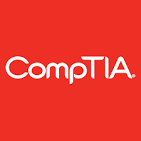CompTIA IT Fundamentals (ITF+) is an introduction to basic IT knowledge and skills that helps professionals decide if a career in IT is right for them. It also helps organizations prepare non-technical teams for digital transformation.
CompTIA ITF+ helps professionals to decide if a career in IT is right for them or to develop a broader understanding of IT.
- ITF+ is the only pre-career certification that helps students or career changers determine if they have a competency for information technology and if it is the right career path for them.
- ITF+ is the only single certification that covers all areas of IT foundations, creating a broader understanding of IT making it ideal for non-technical professionals.
- ITF+ establishes an IT education framework for students in secondary and post-secondary settings.
